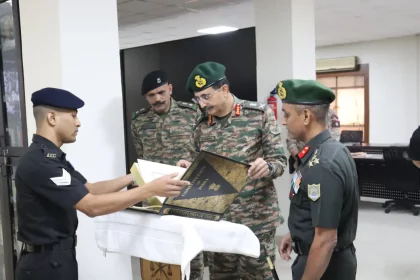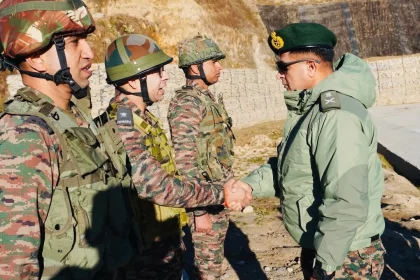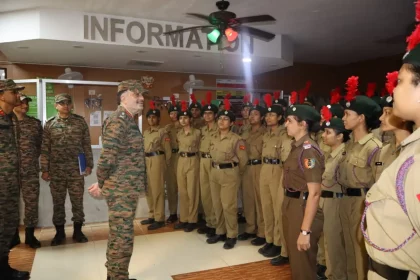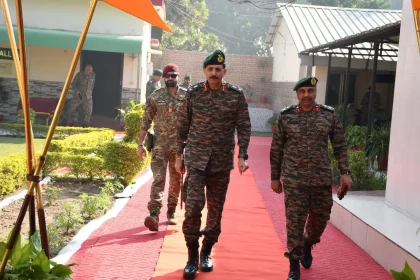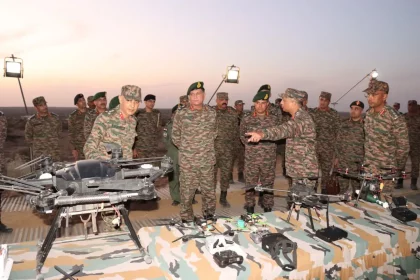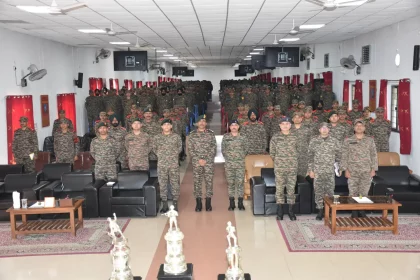Lt Gen Devendra Sharma Visits Institute of Military Law
Lt Gen Devendra Sharma Reviews Training Initiatives, Infrastructure, and Curriculum Adaptations at IML to Strengthen Military Legal Education
Lt Gen Gambhir Singh Reviews Operational Readiness of Ball of Fire Division in Arunachal Pradesh
Lt Gen Gambhir Singh lauds Ball of Fire Division for professionalism and combat readiness during his review of forward areas…
Lt Gen Abhijit S Pendharkar Reviews Exercise Surge Response at Military Hospital Dinjan
Lt Gen Abhijit S Pendharkar commends Army medical teams and NCC cadets for excellence in humanitarian and emergency response preparedness.
Lt Gen Devendra Sharma Visits RVC Centre & College, Meerut
Lt Gen Devendra Sharma reviews advanced training infrastructure and lauds RVC Centre’s role in strengthening the Army’s operational capabilities.
Lt Gen Dhiraj Seth Reviews Indigenous Battlefield Technologies and Applauds Battle Axe Division’s Operational Excellence
Innovation and Atmanirbharta Take Centre Stage During Exercise Akhand Prahar Under Southern Command.
Combat Leadership Course Commences at NCO Academy, Dhana for Junior Leaders of Indian Army
Six-week training to enhance leadership, cognitive, and technical skills of NCOs amid evolving battlefield dynamics.

